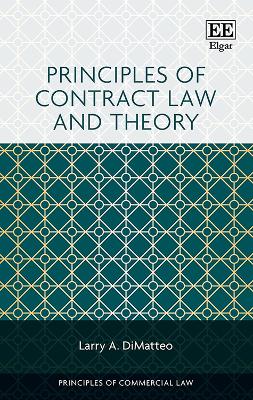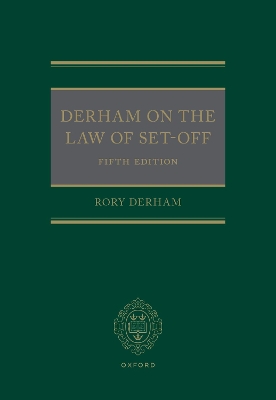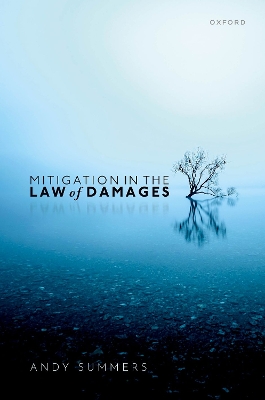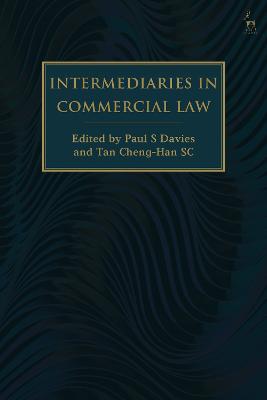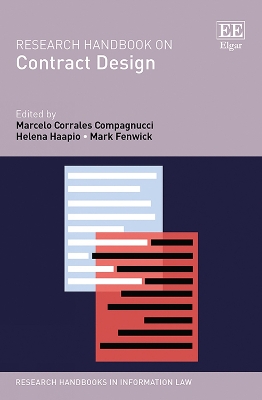Law of Contract Damages
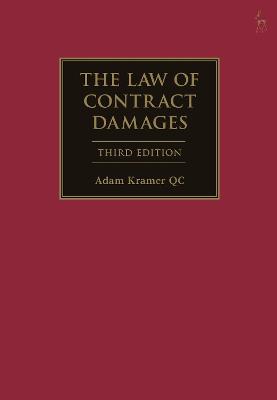 portes grátis
portes grátis
Law of Contract Damages
KC, Adam Kramer
Bloomsbury Publishing PLC
07/2022
696
Dura
Inglês
9781509951253
15 a 20 dias
Descrição não disponível.
PART I
INTRODUCTION
1. A Brief Introduction to the Contract Damages Award
1. Summary
2. The Damages Remedy
3. The Principles of Compensation
4. The Theory of Contract Damages
5. The Currency of the Award
PART II
TYPES OF COMPLAINT
2. Pure Services: Non-Supply/Defective Supply/Delayed Supply
1. Introduction
2. Services to Commercial Claimants (Including Lost Management Time Claims)
3. Services to Public Bodies or Charities
4. Services to Consumers
3. Misadvice (Especially Professional Negligence) and Contractual Misstatement
1. Introduction to the Breach and Non-Breach Positions in Advice and Similar Cases
2. Extrication Cases
3. Adoption/Non-Extrication Cases and Repair
4. The Non-Breach Position: The Alternative Transaction the Claimant Would Have Entered Into
4. Property Non-Delivery, Destruction and Defects (Damage, Sale, Construction, Misrepair)
1. Introduction to the Different Measures of Loss
2. Market Replacement, the First Cure
3. Repair, the Second Cure
4. Further Issues in Repair and Replacement Cases
5. The Measure when There is No Market Replacement and No Repair
5. Seller/Supplier Claims: Refusal/Failure to Accept Goods, Services or Other Performance
1. Introduction
2. Cure by Finding a Replacement Customer on the Market
3. Lost Volume Sales: Where Supply Outstrips Demand
4. No Replacement and Alternative Mitigation
5. Non-Financial Loss
6. Temporary Loss of Use of the Claimant's Property
1. Introduction
2. The Cost of Hiring a Temporary Replacement
3. Lost Profits from Sale to the Market
4. Lost Profits from Employment of the Property
5. Loss of Use of Non-Profit-Earning Goods
7. Loss of Use of Money, Including Breach of Obligations to Pay
1. The Cost of Borrowing Replacement Money
2. Lost Profits from Use of the Money
3. Devaluation and Exchange Rate Losses
4. Causing Insolvency
5. Other Losses
6. Specific Points Relating to Breach of Obligations to Pay Money
7. Awards of Interest Outside the Claim for Damages
8. Inflation
8. Claims by a Tenant, Charterer or Hirer
1. Non-Delivery
2. Late Delivery
3. Hire of Defective Property and Damage to Hired Property
9. Warranties and Indemnities
1. Introduction to Warranties
2. Warranties of Authority
3. Warranties of Quality
4. Warranties of Reasonable Care
5. Indemnities
10. Negative Covenants (Including Exclusive Jurisdiction, Arbitration and Non-compete Clauses)
1. Introduction
2. Property-Related Restrictive Covenants
3. Exclusive Jurisdiction and Arbitration Clauses and Non-Litigation Agreements
4. Non-Compete, Non-Solicitation, Exclusivity, Business Secret and Confidentiality Clauses
PART III
FACTUAL ('BUT FOR') CAUSATION AND ACTUAL LOSS
11. Introduction to Factual ('But For') Causation
1. Factual ('But For') Causation
2. Harm that Would Have Happened Anyway
3. Concurrent Causes and the Modified 'But For' Test in Exceptional Cases
12. The Breach Position: What Actually Happened and What Will Happen
1. What Happened Prior to Trial?
2. What Will Happen Post-Trial? (The Chance of a Loss Principle)
3. Tax (That will or Might be Paid)
13. The Non-Breach Position: What Would or Might Have Happened but for the Breach (Including Loss of a Chance)
1. Summary
2. What Would the Claimant Have Done?
3. What Would the Defendant Have Done?
4. What Natural Events Would Have Occurred?
5. What Would Third Parties Have Done? (The Principle of Loss of a Chance)
6. The Future: What Would Have Happened after Trial
7. Tax (That Would Have Been but Has Not Been and Will Not Be Paid)
PART IV
LEGAL PRINCIPLES OF REMOTENESS, MITIGATION AND LEGAL CAUSATION
14. Remoteness and Scope of Duty
1. For Remoteness Start with Foreseeability
2. The Assumption of Responsibility Basis of Remoteness
3. The Reasonable Contemplation Test of Remoteness
4. The Cap Rule from Cory V Thames Ironworks
5. The Scope of Duty Principle
6. Factors Relevant to Scope of Duty and Assumption of Responsibility
7. The Burden of Proof
8. The Interaction between Scope of Duty and Contributory Negligence and Contribution
15. Legal Causation, Mitigation and Contributory Negligence
1. Introduction
2. Legal Causation
3. The Principle of Mitigation
4. Betterment
5. Burdens of Proof
6. Contributory Negligence
7. Applying Legal Causation to What Would Have Happened but for the Breach
16. Causation in Practice: Intervening and Mitigatory Acts and Events by Category
1. Introduction to this Chapter
2. Claimant Failure to Avoid the Danger
3. Failing to Terminate, or Terminating, the Contract with the Defendant
4. The Claimant Sourcing or Not Sourcing a Replacement Supply or Customer or a Repair
5. Speculation by the Claimant
6. Money Made by the Claimant Post-Breach
7. Impecuniosity and Other Special Characteristics of the Claimant
8. Trading while Insolvent
9. Unreasonable Claimant Conduct
10. Post-Breach Dealings with the Defendant
11. Receipt by the Claimant of Payments or Help from Third Parties (Including Insurance and State Assistance and Litigation with Third Parties) or Non-Payment by Third Parties
12. Claimant Payments and Liabilities to Third Parties
13. Payments that would have been made by the Claimant to Third Parties
14. Passing on Risk or Selling the Property to Third Parties
15. Events External to the Claimant
17. The Date of Assessment
1. The Principles
2. The Different Dates of Purchase of a Replacement or Cure on the Market
3. The Different Dates of Sale to the Market
4. Where There Is No Opportunity to Resort to the Market
PART V
PARTICULAR TYPES OF LOSS REQUIRING SEPARATE EXAMINATION
18. Proving Business Loss: Revenue, Capital Value, Profit and Costs, Wasted Expenditure/Reliance Losses, Burdens and the Fair Wind
1. Revenue, Profit and Capital Loss
2. Pleading, Proof, Evidence and the Fair Wind Principle
3. The Presumption of Breaking Even and the Myth of the Reliance Measure of Loss
4. Examples of Lost Profit Awards
19. Non-Pecuniary Loss
1. The Evolution of the Legal Test
2. Quantification and Presumptions
3. (Physical) Inconvenience and Disturbance
4. Personal Injury
20. Loss Comprising Liability to Third Parties or Litigation Costs
1. Indemnity for Third Party Liability
2. Costs in Relation to the Breach of Contract Dispute Itself
3. Costs in Previous Proceedings Against the Defendant
4. Costs in Third Party Proceedings
PART VI
OTHER MATTERS
21. Third Parties and Loss
1. Recovery by the Claimant of the Third Party's Loss for the Benefit
of the Third Party ('Transferred Loss' and the Albazero Principle)
2. Recovery by a Claimant of Its Own Loss
3. Third Party Claims Under the Contracts (Rights of Third Parties) Act 1999
22. Negotiating Damages
1. The Wrotham Park Decision
2. The Morris-Garner Decision
3. Basis of the Principles
4. Scope of the Principles
5. The Measure
23. Non-Compensatory Damages
1. Nominal Damages
2. Account of Profits/Restitutionary Damages
3. Punitive/Exemplary Damages
24. Concurrent Claims
1. Against the Same Defendant
2. Against Different Defendants
25. Exclusion Clauses
1. This Chapter and Introduction
2. The Role of Statutes
3. Principles of Construction
4. Particular Phrases Used in Exclusion Clauses Denoting Certain Types of Loss
5. Exclusion of Particular Types of Fault/Conduct
INTRODUCTION
1. A Brief Introduction to the Contract Damages Award
1. Summary
2. The Damages Remedy
3. The Principles of Compensation
4. The Theory of Contract Damages
5. The Currency of the Award
PART II
TYPES OF COMPLAINT
2. Pure Services: Non-Supply/Defective Supply/Delayed Supply
1. Introduction
2. Services to Commercial Claimants (Including Lost Management Time Claims)
3. Services to Public Bodies or Charities
4. Services to Consumers
3. Misadvice (Especially Professional Negligence) and Contractual Misstatement
1. Introduction to the Breach and Non-Breach Positions in Advice and Similar Cases
2. Extrication Cases
3. Adoption/Non-Extrication Cases and Repair
4. The Non-Breach Position: The Alternative Transaction the Claimant Would Have Entered Into
4. Property Non-Delivery, Destruction and Defects (Damage, Sale, Construction, Misrepair)
1. Introduction to the Different Measures of Loss
2. Market Replacement, the First Cure
3. Repair, the Second Cure
4. Further Issues in Repair and Replacement Cases
5. The Measure when There is No Market Replacement and No Repair
5. Seller/Supplier Claims: Refusal/Failure to Accept Goods, Services or Other Performance
1. Introduction
2. Cure by Finding a Replacement Customer on the Market
3. Lost Volume Sales: Where Supply Outstrips Demand
4. No Replacement and Alternative Mitigation
5. Non-Financial Loss
6. Temporary Loss of Use of the Claimant's Property
1. Introduction
2. The Cost of Hiring a Temporary Replacement
3. Lost Profits from Sale to the Market
4. Lost Profits from Employment of the Property
5. Loss of Use of Non-Profit-Earning Goods
7. Loss of Use of Money, Including Breach of Obligations to Pay
1. The Cost of Borrowing Replacement Money
2. Lost Profits from Use of the Money
3. Devaluation and Exchange Rate Losses
4. Causing Insolvency
5. Other Losses
6. Specific Points Relating to Breach of Obligations to Pay Money
7. Awards of Interest Outside the Claim for Damages
8. Inflation
8. Claims by a Tenant, Charterer or Hirer
1. Non-Delivery
2. Late Delivery
3. Hire of Defective Property and Damage to Hired Property
9. Warranties and Indemnities
1. Introduction to Warranties
2. Warranties of Authority
3. Warranties of Quality
4. Warranties of Reasonable Care
5. Indemnities
10. Negative Covenants (Including Exclusive Jurisdiction, Arbitration and Non-compete Clauses)
1. Introduction
2. Property-Related Restrictive Covenants
3. Exclusive Jurisdiction and Arbitration Clauses and Non-Litigation Agreements
4. Non-Compete, Non-Solicitation, Exclusivity, Business Secret and Confidentiality Clauses
PART III
FACTUAL ('BUT FOR') CAUSATION AND ACTUAL LOSS
11. Introduction to Factual ('But For') Causation
1. Factual ('But For') Causation
2. Harm that Would Have Happened Anyway
3. Concurrent Causes and the Modified 'But For' Test in Exceptional Cases
12. The Breach Position: What Actually Happened and What Will Happen
1. What Happened Prior to Trial?
2. What Will Happen Post-Trial? (The Chance of a Loss Principle)
3. Tax (That will or Might be Paid)
13. The Non-Breach Position: What Would or Might Have Happened but for the Breach (Including Loss of a Chance)
1. Summary
2. What Would the Claimant Have Done?
3. What Would the Defendant Have Done?
4. What Natural Events Would Have Occurred?
5. What Would Third Parties Have Done? (The Principle of Loss of a Chance)
6. The Future: What Would Have Happened after Trial
7. Tax (That Would Have Been but Has Not Been and Will Not Be Paid)
PART IV
LEGAL PRINCIPLES OF REMOTENESS, MITIGATION AND LEGAL CAUSATION
14. Remoteness and Scope of Duty
1. For Remoteness Start with Foreseeability
2. The Assumption of Responsibility Basis of Remoteness
3. The Reasonable Contemplation Test of Remoteness
4. The Cap Rule from Cory V Thames Ironworks
5. The Scope of Duty Principle
6. Factors Relevant to Scope of Duty and Assumption of Responsibility
7. The Burden of Proof
8. The Interaction between Scope of Duty and Contributory Negligence and Contribution
15. Legal Causation, Mitigation and Contributory Negligence
1. Introduction
2. Legal Causation
3. The Principle of Mitigation
4. Betterment
5. Burdens of Proof
6. Contributory Negligence
7. Applying Legal Causation to What Would Have Happened but for the Breach
16. Causation in Practice: Intervening and Mitigatory Acts and Events by Category
1. Introduction to this Chapter
2. Claimant Failure to Avoid the Danger
3. Failing to Terminate, or Terminating, the Contract with the Defendant
4. The Claimant Sourcing or Not Sourcing a Replacement Supply or Customer or a Repair
5. Speculation by the Claimant
6. Money Made by the Claimant Post-Breach
7. Impecuniosity and Other Special Characteristics of the Claimant
8. Trading while Insolvent
9. Unreasonable Claimant Conduct
10. Post-Breach Dealings with the Defendant
11. Receipt by the Claimant of Payments or Help from Third Parties (Including Insurance and State Assistance and Litigation with Third Parties) or Non-Payment by Third Parties
12. Claimant Payments and Liabilities to Third Parties
13. Payments that would have been made by the Claimant to Third Parties
14. Passing on Risk or Selling the Property to Third Parties
15. Events External to the Claimant
17. The Date of Assessment
1. The Principles
2. The Different Dates of Purchase of a Replacement or Cure on the Market
3. The Different Dates of Sale to the Market
4. Where There Is No Opportunity to Resort to the Market
PART V
PARTICULAR TYPES OF LOSS REQUIRING SEPARATE EXAMINATION
18. Proving Business Loss: Revenue, Capital Value, Profit and Costs, Wasted Expenditure/Reliance Losses, Burdens and the Fair Wind
1. Revenue, Profit and Capital Loss
2. Pleading, Proof, Evidence and the Fair Wind Principle
3. The Presumption of Breaking Even and the Myth of the Reliance Measure of Loss
4. Examples of Lost Profit Awards
19. Non-Pecuniary Loss
1. The Evolution of the Legal Test
2. Quantification and Presumptions
3. (Physical) Inconvenience and Disturbance
4. Personal Injury
20. Loss Comprising Liability to Third Parties or Litigation Costs
1. Indemnity for Third Party Liability
2. Costs in Relation to the Breach of Contract Dispute Itself
3. Costs in Previous Proceedings Against the Defendant
4. Costs in Third Party Proceedings
PART VI
OTHER MATTERS
21. Third Parties and Loss
1. Recovery by the Claimant of the Third Party's Loss for the Benefit
of the Third Party ('Transferred Loss' and the Albazero Principle)
2. Recovery by a Claimant of Its Own Loss
3. Third Party Claims Under the Contracts (Rights of Third Parties) Act 1999
22. Negotiating Damages
1. The Wrotham Park Decision
2. The Morris-Garner Decision
3. Basis of the Principles
4. Scope of the Principles
5. The Measure
23. Non-Compensatory Damages
1. Nominal Damages
2. Account of Profits/Restitutionary Damages
3. Punitive/Exemplary Damages
24. Concurrent Claims
1. Against the Same Defendant
2. Against Different Defendants
25. Exclusion Clauses
1. This Chapter and Introduction
2. The Role of Statutes
3. Principles of Construction
4. Particular Phrases Used in Exclusion Clauses Denoting Certain Types of Loss
5. Exclusion of Particular Types of Fault/Conduct
Este título pertence ao(s) assunto(s) indicados(s). Para ver outros títulos clique no assunto desejado.
Contract law; Commercial law; Damages; Compensation
PART I
INTRODUCTION
1. A Brief Introduction to the Contract Damages Award
1. Summary
2. The Damages Remedy
3. The Principles of Compensation
4. The Theory of Contract Damages
5. The Currency of the Award
PART II
TYPES OF COMPLAINT
2. Pure Services: Non-Supply/Defective Supply/Delayed Supply
1. Introduction
2. Services to Commercial Claimants (Including Lost Management Time Claims)
3. Services to Public Bodies or Charities
4. Services to Consumers
3. Misadvice (Especially Professional Negligence) and Contractual Misstatement
1. Introduction to the Breach and Non-Breach Positions in Advice and Similar Cases
2. Extrication Cases
3. Adoption/Non-Extrication Cases and Repair
4. The Non-Breach Position: The Alternative Transaction the Claimant Would Have Entered Into
4. Property Non-Delivery, Destruction and Defects (Damage, Sale, Construction, Misrepair)
1. Introduction to the Different Measures of Loss
2. Market Replacement, the First Cure
3. Repair, the Second Cure
4. Further Issues in Repair and Replacement Cases
5. The Measure when There is No Market Replacement and No Repair
5. Seller/Supplier Claims: Refusal/Failure to Accept Goods, Services or Other Performance
1. Introduction
2. Cure by Finding a Replacement Customer on the Market
3. Lost Volume Sales: Where Supply Outstrips Demand
4. No Replacement and Alternative Mitigation
5. Non-Financial Loss
6. Temporary Loss of Use of the Claimant's Property
1. Introduction
2. The Cost of Hiring a Temporary Replacement
3. Lost Profits from Sale to the Market
4. Lost Profits from Employment of the Property
5. Loss of Use of Non-Profit-Earning Goods
7. Loss of Use of Money, Including Breach of Obligations to Pay
1. The Cost of Borrowing Replacement Money
2. Lost Profits from Use of the Money
3. Devaluation and Exchange Rate Losses
4. Causing Insolvency
5. Other Losses
6. Specific Points Relating to Breach of Obligations to Pay Money
7. Awards of Interest Outside the Claim for Damages
8. Inflation
8. Claims by a Tenant, Charterer or Hirer
1. Non-Delivery
2. Late Delivery
3. Hire of Defective Property and Damage to Hired Property
9. Warranties and Indemnities
1. Introduction to Warranties
2. Warranties of Authority
3. Warranties of Quality
4. Warranties of Reasonable Care
5. Indemnities
10. Negative Covenants (Including Exclusive Jurisdiction, Arbitration and Non-compete Clauses)
1. Introduction
2. Property-Related Restrictive Covenants
3. Exclusive Jurisdiction and Arbitration Clauses and Non-Litigation Agreements
4. Non-Compete, Non-Solicitation, Exclusivity, Business Secret and Confidentiality Clauses
PART III
FACTUAL ('BUT FOR') CAUSATION AND ACTUAL LOSS
11. Introduction to Factual ('But For') Causation
1. Factual ('But For') Causation
2. Harm that Would Have Happened Anyway
3. Concurrent Causes and the Modified 'But For' Test in Exceptional Cases
12. The Breach Position: What Actually Happened and What Will Happen
1. What Happened Prior to Trial?
2. What Will Happen Post-Trial? (The Chance of a Loss Principle)
3. Tax (That will or Might be Paid)
13. The Non-Breach Position: What Would or Might Have Happened but for the Breach (Including Loss of a Chance)
1. Summary
2. What Would the Claimant Have Done?
3. What Would the Defendant Have Done?
4. What Natural Events Would Have Occurred?
5. What Would Third Parties Have Done? (The Principle of Loss of a Chance)
6. The Future: What Would Have Happened after Trial
7. Tax (That Would Have Been but Has Not Been and Will Not Be Paid)
PART IV
LEGAL PRINCIPLES OF REMOTENESS, MITIGATION AND LEGAL CAUSATION
14. Remoteness and Scope of Duty
1. For Remoteness Start with Foreseeability
2. The Assumption of Responsibility Basis of Remoteness
3. The Reasonable Contemplation Test of Remoteness
4. The Cap Rule from Cory V Thames Ironworks
5. The Scope of Duty Principle
6. Factors Relevant to Scope of Duty and Assumption of Responsibility
7. The Burden of Proof
8. The Interaction between Scope of Duty and Contributory Negligence and Contribution
15. Legal Causation, Mitigation and Contributory Negligence
1. Introduction
2. Legal Causation
3. The Principle of Mitigation
4. Betterment
5. Burdens of Proof
6. Contributory Negligence
7. Applying Legal Causation to What Would Have Happened but for the Breach
16. Causation in Practice: Intervening and Mitigatory Acts and Events by Category
1. Introduction to this Chapter
2. Claimant Failure to Avoid the Danger
3. Failing to Terminate, or Terminating, the Contract with the Defendant
4. The Claimant Sourcing or Not Sourcing a Replacement Supply or Customer or a Repair
5. Speculation by the Claimant
6. Money Made by the Claimant Post-Breach
7. Impecuniosity and Other Special Characteristics of the Claimant
8. Trading while Insolvent
9. Unreasonable Claimant Conduct
10. Post-Breach Dealings with the Defendant
11. Receipt by the Claimant of Payments or Help from Third Parties (Including Insurance and State Assistance and Litigation with Third Parties) or Non-Payment by Third Parties
12. Claimant Payments and Liabilities to Third Parties
13. Payments that would have been made by the Claimant to Third Parties
14. Passing on Risk or Selling the Property to Third Parties
15. Events External to the Claimant
17. The Date of Assessment
1. The Principles
2. The Different Dates of Purchase of a Replacement or Cure on the Market
3. The Different Dates of Sale to the Market
4. Where There Is No Opportunity to Resort to the Market
PART V
PARTICULAR TYPES OF LOSS REQUIRING SEPARATE EXAMINATION
18. Proving Business Loss: Revenue, Capital Value, Profit and Costs, Wasted Expenditure/Reliance Losses, Burdens and the Fair Wind
1. Revenue, Profit and Capital Loss
2. Pleading, Proof, Evidence and the Fair Wind Principle
3. The Presumption of Breaking Even and the Myth of the Reliance Measure of Loss
4. Examples of Lost Profit Awards
19. Non-Pecuniary Loss
1. The Evolution of the Legal Test
2. Quantification and Presumptions
3. (Physical) Inconvenience and Disturbance
4. Personal Injury
20. Loss Comprising Liability to Third Parties or Litigation Costs
1. Indemnity for Third Party Liability
2. Costs in Relation to the Breach of Contract Dispute Itself
3. Costs in Previous Proceedings Against the Defendant
4. Costs in Third Party Proceedings
PART VI
OTHER MATTERS
21. Third Parties and Loss
1. Recovery by the Claimant of the Third Party's Loss for the Benefit
of the Third Party ('Transferred Loss' and the Albazero Principle)
2. Recovery by a Claimant of Its Own Loss
3. Third Party Claims Under the Contracts (Rights of Third Parties) Act 1999
22. Negotiating Damages
1. The Wrotham Park Decision
2. The Morris-Garner Decision
3. Basis of the Principles
4. Scope of the Principles
5. The Measure
23. Non-Compensatory Damages
1. Nominal Damages
2. Account of Profits/Restitutionary Damages
3. Punitive/Exemplary Damages
24. Concurrent Claims
1. Against the Same Defendant
2. Against Different Defendants
25. Exclusion Clauses
1. This Chapter and Introduction
2. The Role of Statutes
3. Principles of Construction
4. Particular Phrases Used in Exclusion Clauses Denoting Certain Types of Loss
5. Exclusion of Particular Types of Fault/Conduct
INTRODUCTION
1. A Brief Introduction to the Contract Damages Award
1. Summary
2. The Damages Remedy
3. The Principles of Compensation
4. The Theory of Contract Damages
5. The Currency of the Award
PART II
TYPES OF COMPLAINT
2. Pure Services: Non-Supply/Defective Supply/Delayed Supply
1. Introduction
2. Services to Commercial Claimants (Including Lost Management Time Claims)
3. Services to Public Bodies or Charities
4. Services to Consumers
3. Misadvice (Especially Professional Negligence) and Contractual Misstatement
1. Introduction to the Breach and Non-Breach Positions in Advice and Similar Cases
2. Extrication Cases
3. Adoption/Non-Extrication Cases and Repair
4. The Non-Breach Position: The Alternative Transaction the Claimant Would Have Entered Into
4. Property Non-Delivery, Destruction and Defects (Damage, Sale, Construction, Misrepair)
1. Introduction to the Different Measures of Loss
2. Market Replacement, the First Cure
3. Repair, the Second Cure
4. Further Issues in Repair and Replacement Cases
5. The Measure when There is No Market Replacement and No Repair
5. Seller/Supplier Claims: Refusal/Failure to Accept Goods, Services or Other Performance
1. Introduction
2. Cure by Finding a Replacement Customer on the Market
3. Lost Volume Sales: Where Supply Outstrips Demand
4. No Replacement and Alternative Mitigation
5. Non-Financial Loss
6. Temporary Loss of Use of the Claimant's Property
1. Introduction
2. The Cost of Hiring a Temporary Replacement
3. Lost Profits from Sale to the Market
4. Lost Profits from Employment of the Property
5. Loss of Use of Non-Profit-Earning Goods
7. Loss of Use of Money, Including Breach of Obligations to Pay
1. The Cost of Borrowing Replacement Money
2. Lost Profits from Use of the Money
3. Devaluation and Exchange Rate Losses
4. Causing Insolvency
5. Other Losses
6. Specific Points Relating to Breach of Obligations to Pay Money
7. Awards of Interest Outside the Claim for Damages
8. Inflation
8. Claims by a Tenant, Charterer or Hirer
1. Non-Delivery
2. Late Delivery
3. Hire of Defective Property and Damage to Hired Property
9. Warranties and Indemnities
1. Introduction to Warranties
2. Warranties of Authority
3. Warranties of Quality
4. Warranties of Reasonable Care
5. Indemnities
10. Negative Covenants (Including Exclusive Jurisdiction, Arbitration and Non-compete Clauses)
1. Introduction
2. Property-Related Restrictive Covenants
3. Exclusive Jurisdiction and Arbitration Clauses and Non-Litigation Agreements
4. Non-Compete, Non-Solicitation, Exclusivity, Business Secret and Confidentiality Clauses
PART III
FACTUAL ('BUT FOR') CAUSATION AND ACTUAL LOSS
11. Introduction to Factual ('But For') Causation
1. Factual ('But For') Causation
2. Harm that Would Have Happened Anyway
3. Concurrent Causes and the Modified 'But For' Test in Exceptional Cases
12. The Breach Position: What Actually Happened and What Will Happen
1. What Happened Prior to Trial?
2. What Will Happen Post-Trial? (The Chance of a Loss Principle)
3. Tax (That will or Might be Paid)
13. The Non-Breach Position: What Would or Might Have Happened but for the Breach (Including Loss of a Chance)
1. Summary
2. What Would the Claimant Have Done?
3. What Would the Defendant Have Done?
4. What Natural Events Would Have Occurred?
5. What Would Third Parties Have Done? (The Principle of Loss of a Chance)
6. The Future: What Would Have Happened after Trial
7. Tax (That Would Have Been but Has Not Been and Will Not Be Paid)
PART IV
LEGAL PRINCIPLES OF REMOTENESS, MITIGATION AND LEGAL CAUSATION
14. Remoteness and Scope of Duty
1. For Remoteness Start with Foreseeability
2. The Assumption of Responsibility Basis of Remoteness
3. The Reasonable Contemplation Test of Remoteness
4. The Cap Rule from Cory V Thames Ironworks
5. The Scope of Duty Principle
6. Factors Relevant to Scope of Duty and Assumption of Responsibility
7. The Burden of Proof
8. The Interaction between Scope of Duty and Contributory Negligence and Contribution
15. Legal Causation, Mitigation and Contributory Negligence
1. Introduction
2. Legal Causation
3. The Principle of Mitigation
4. Betterment
5. Burdens of Proof
6. Contributory Negligence
7. Applying Legal Causation to What Would Have Happened but for the Breach
16. Causation in Practice: Intervening and Mitigatory Acts and Events by Category
1. Introduction to this Chapter
2. Claimant Failure to Avoid the Danger
3. Failing to Terminate, or Terminating, the Contract with the Defendant
4. The Claimant Sourcing or Not Sourcing a Replacement Supply or Customer or a Repair
5. Speculation by the Claimant
6. Money Made by the Claimant Post-Breach
7. Impecuniosity and Other Special Characteristics of the Claimant
8. Trading while Insolvent
9. Unreasonable Claimant Conduct
10. Post-Breach Dealings with the Defendant
11. Receipt by the Claimant of Payments or Help from Third Parties (Including Insurance and State Assistance and Litigation with Third Parties) or Non-Payment by Third Parties
12. Claimant Payments and Liabilities to Third Parties
13. Payments that would have been made by the Claimant to Third Parties
14. Passing on Risk or Selling the Property to Third Parties
15. Events External to the Claimant
17. The Date of Assessment
1. The Principles
2. The Different Dates of Purchase of a Replacement or Cure on the Market
3. The Different Dates of Sale to the Market
4. Where There Is No Opportunity to Resort to the Market
PART V
PARTICULAR TYPES OF LOSS REQUIRING SEPARATE EXAMINATION
18. Proving Business Loss: Revenue, Capital Value, Profit and Costs, Wasted Expenditure/Reliance Losses, Burdens and the Fair Wind
1. Revenue, Profit and Capital Loss
2. Pleading, Proof, Evidence and the Fair Wind Principle
3. The Presumption of Breaking Even and the Myth of the Reliance Measure of Loss
4. Examples of Lost Profit Awards
19. Non-Pecuniary Loss
1. The Evolution of the Legal Test
2. Quantification and Presumptions
3. (Physical) Inconvenience and Disturbance
4. Personal Injury
20. Loss Comprising Liability to Third Parties or Litigation Costs
1. Indemnity for Third Party Liability
2. Costs in Relation to the Breach of Contract Dispute Itself
3. Costs in Previous Proceedings Against the Defendant
4. Costs in Third Party Proceedings
PART VI
OTHER MATTERS
21. Third Parties and Loss
1. Recovery by the Claimant of the Third Party's Loss for the Benefit
of the Third Party ('Transferred Loss' and the Albazero Principle)
2. Recovery by a Claimant of Its Own Loss
3. Third Party Claims Under the Contracts (Rights of Third Parties) Act 1999
22. Negotiating Damages
1. The Wrotham Park Decision
2. The Morris-Garner Decision
3. Basis of the Principles
4. Scope of the Principles
5. The Measure
23. Non-Compensatory Damages
1. Nominal Damages
2. Account of Profits/Restitutionary Damages
3. Punitive/Exemplary Damages
24. Concurrent Claims
1. Against the Same Defendant
2. Against Different Defendants
25. Exclusion Clauses
1. This Chapter and Introduction
2. The Role of Statutes
3. Principles of Construction
4. Particular Phrases Used in Exclusion Clauses Denoting Certain Types of Loss
5. Exclusion of Particular Types of Fault/Conduct
Este título pertence ao(s) assunto(s) indicados(s). Para ver outros títulos clique no assunto desejado.

